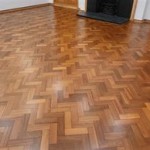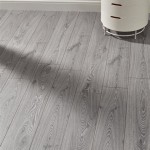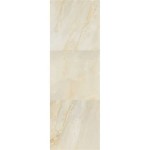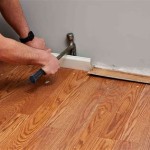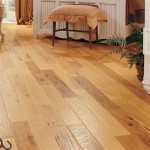How Much Square Feet Does One Box of Laminate Flooring Cover?
Determining the square footage coverage of a single box of laminate flooring is a crucial step in accurately estimating material needs for any flooring project. Underestimating this quantity can lead to project delays and necessitate additional trips to the supplier. Conversely, overestimating can result in unnecessary expenses for unused material. This article provides a comprehensive guide to understanding how to calculate the coverage of laminate flooring boxes, factors that influence this coverage, and best practices for purchasing the correct amount.
The primary specification to consider is the square footage indicated on the laminate flooring box. This figure represents the total area the flooring planks within the box are designed to cover, assuming ideal installation conditions. However, the stated square footage is a theoretical maximum and does not account for waste generated during the installation process. This waste arises from cuts made to fit the planks around walls, corners, doorways, and other obstructions.
Therefore, a simple calculation involving multiplying room dimensions to determine the total area and then dividing by the box's stated square footage will often result in an underestimation of the number of boxes required. A more nuanced approach is needed to ensure sufficient material is available for the complete installation.
Understanding the Stated Square Footage on the Box
The square footage printed on the laminate flooring box is the manufacturer's specification for the total surface area the planks inside are intended to cover. This number is derived from multiplying the length and width of a single plank by the number of planks included in the box. For instance, if a box contains eight planks, each measuring 4 feet long and 6 inches (0.5 feet) wide, the calculation would be: (4 feet x 0.5 feet) x 8 planks = 16 square feet. This figure would then be prominently displayed on the box as the coverage area.
It is important to note that this stated square footage represents a perfect scenario where no cuts are necessary. In reality, most flooring projects necessitate cutting planks to fit the dimensions of the room and to navigate around obstacles. Consequently, the effective coverage area is always less than the stated square footage. Paying close attention to this distinction is essential for avoiding shortages during the installation process.
Furthermore, manufacturers often provide this square footage information in both imperial (square feet) and metric (square meters) units. Ensuring comprehension of the unit of measurement is vital when calculating the total quantity needed. A discrepancy can arise if the installer mistakenly interprets square meters as square feet or vice versa, leading to a significant miscalculation.
Additionally, some manufacturers might specify the number of planks contained within the box alongside the square footage. This allows for a simple double-check of the stated coverage by manually calculating the area of a single plank and multiplying by the number of planks. This verification step can help identify potential errors in the manufacturer's stated coverage.
Waste Factors in Laminate Flooring Installation
Waste is an unavoidable consequence of laminate flooring installation. It refers to the portion of the flooring material that is rendered unusable due to cuts required to fit the flooring around the perimeter of the room, around door frames, heating vents, pipes, and other obstructions. Accurately estimating the waste factor is crucial for purchasing sufficient laminate flooring.
The typical waste factor for laminate flooring installations ranges from 5% to 10%. For simple rectangular or square rooms with minimal obstructions, a 5% waste factor is generally sufficient. This means adding 5% to the total square footage of the room before dividing by the square footage covered by one box. For example, if the room is 200 square feet, adding 5% results in 210 square feet, This is the number to divide by the stated square feet per box.
However, for rooms with irregular shapes, numerous corners, angled walls, or significant obstructions, a higher waste factor of 10% or even 15% may be necessary. This increased waste factor accounts for the greater number of cuts required to achieve a proper fit, leading to more discarded material. Complex layouts often necessitate intricate cuts, consuming a larger proportion of the planks.
Experience plays a significant role in minimizing waste. Professional installers, due to their expertise, typically generate less waste than inexperienced DIYers. They are adept at planning the layout to minimize cuts and utilizing offcuts in other areas of the room. Therefore, it is prudent for inexperienced installers to overestimate the waste factor to avoid running short of material.
Patterned or directional laminate flooring also tends to generate more waste. These types of flooring require careful matching of the pattern or grain, which can result in more unusable offcuts. When working with patterned flooring, a waste factor of 10% to 15% is highly recommended.
Calculating Laminate Flooring Needs Accurately
Accurate calculation of laminate flooring needs involves several sequential steps. First, measure the length and width of the room in feet. Multiply these two dimensions to determine the total square footage of the room. This provides the gross square footage that needs to be covered with flooring.
Next, determine the appropriate waste factor based on the complexity of the room and the installer's experience. As previously discussed, a 5% waste factor is suitable for simple rooms, while a 10% to 15% waste factor is recommended for more complex layouts or for installations involving patterned flooring.
To incorporate the waste factor, multiply the gross square footage of the room by 1 plus the waste factor expressed as a decimal. For example, if the room is 200 square feet and a 5% waste factor is chosen, the calculation would be: 200 square feet x 1.05 = 210 square feet. This adjusted square footage represents the total area of flooring material that needs to be purchased.
Finally, divide the adjusted square footage by the square footage covered by a single box of laminate flooring. This result represents the number of boxes required for the project. Since it is impossible to purchase a fraction of a box, always round up to the nearest whole number. For instance, if the calculation yields 5.3 boxes, purchase 6 boxes to ensure sufficient material.
Consider the availability of the specific laminate flooring chosen. If the flooring is readily available from local suppliers, it may be acceptable to purchase a slightly lower quantity initially and acquire additional boxes if needed. However, if the flooring is a special order item with a long lead time, it is prudent to purchase slightly more than required to avoid potential delays. Excess material can often be returned, according to the retailer's return policy, or stored for future repairs.
It is also advisable to keep a few spare planks after the installation is complete. These planks can be used to replace damaged sections of the flooring in the future, ensuring a consistent appearance. Store the spare planks in a dry, climate-controlled environment to prevent warping or other damage.
In summary, accurately determining the number of laminate flooring boxes needed involves understanding the stated square footage per box, accounting for waste factors based on room complexity and installation experience, and performing the necessary calculations. Following these guidelines will help ensure a smooth and successful flooring installation project.

Why Is There Diffe Square Feet Per Box Of Laminate Flooring
How Many Square Feet Are In A Box Of Laminate Flooring Quora

How To Measure Rooms For Flooring Help Advice Leader Floors

Why Is There Diffe Square Feet Per Box Of Laminate Flooring

Laminate Flooring Calculator How Much Do I Need

How Much Extra Flooring You Should Buy Next Day Floors

How Much Extra Laminate Flooring Do I Need Floor City

Home Dynamix Wood Laminate Flooring Cloudwalk 6212 Country Oak 1 Box 10 Square Feet Com

How To Measure For Laminate Flooring In 3 Steps

How Much Extra Flooring You Should Buy Next Day Floors
Related Posts

